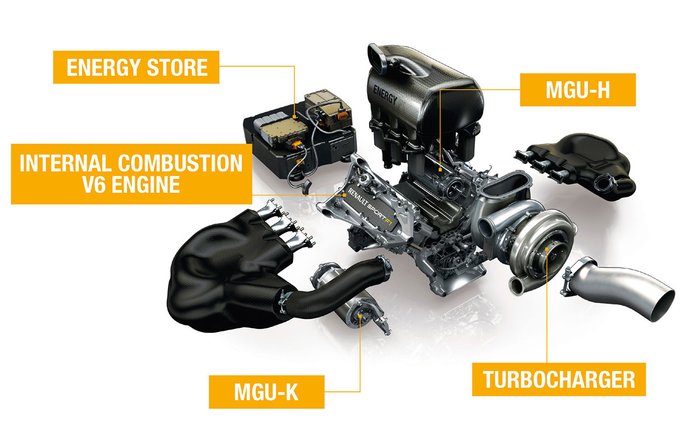
How does an F1 car work?(part 2)
Jaroslav Filip
In the first part we focused more on the outside of an F1 monopost, so now we are going to concentrate on the inside. And the main thing is probably the power unit. The first thing to mention is that 4 manufacturers currently on the grid need to have the same type of engine, but still it's completely different. The manufacturers are working with a turbocharged 1,6 litres V6 with the help of MGUs. The cars are getting rapidly bigger although the engines are still the same size (if not smaller in the case of Honda). If you ask someone, who watches F1 for a longer period of time, about the sound of today's car he is probably gonna tell you he doesn't like the sound or he likes the sound, but prefers other engines.The best sounding engines of F1 were V10 in the early 2000's.

Even though it's not a big block like it used to be, it makes the most power. A big part is also the earlier mentioned MGUs. MGU-H (h for heat) is transferring the heat of exhaust gasses into energy that can be either immediately used or more commonly saved into the energy storage. Then there is MGU-K (k for kinetic), this is transferring the energy from braking into energy storage. The energy from the storage is used for faster acceleration of the turbo, when exiting a corner or it can be used for faster rotation of wheels. Because all of this energy in today's engines we can call the F1 cars hybrids and more environmentally friendly.

Also F1 cars need a lot of cooling and even when you stay for a few minutes in one place with the car turned on, you can overheat the whole car, that's why you see big holes in the car like side pods and brake ducts. They are used for internal cooling and sometimes when a pitstop is longer than it should be, you can see smoke coming out of the brakes.
